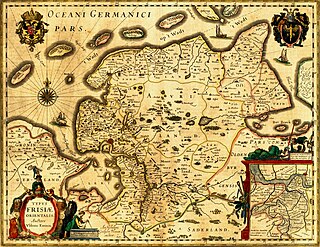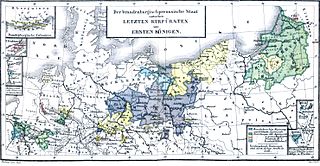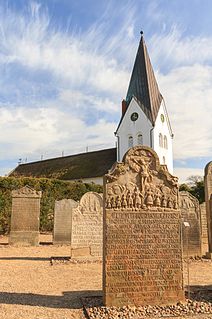 W
WThe German-speaking states in the early modern period (1500–1800) were divided politically and religiously. They all suffered greatly in the Thirty Years War (1618–1648). Catholic Austria and Lutheran Prussia were the major players.
 W
WBerg was a state—originally a county, later a duchy—in the Rhineland of Germany. Its capital was Düsseldorf. It existed as a distinct political entity from the early 12th to the 19th centuries.
 W
WBrandenburg-Prussia is the historiographic denomination for the Early Modern realm of the Brandenburgian Hohenzollerns between 1618 and 1701. Based in the Electorate of Brandenburg, the main branch of the Hohenzollern intermarried with the branch ruling the Duchy of Prussia, and secured succession upon the latter's extinction in the male line in 1618. Another consequence of the intermarriage was the incorporation of the lower Rhenish principalities of Cleves, Mark and Ravensberg after the Treaty of Xanten in 1614.
 W
WBremen-Verden, formally the Duchies of Bremen and Verden, were two territories and immediate fiefs of the Holy Roman Empire, which emerged and gained imperial immediacy in 1180. By their original constitution they were prince-bishoprics of the Archdiocese of Bremen and Bishopric of Verden.
 W
WThe County of East-Frisia was a county in the region of East Frisia in the northwest of the present-day German state of Lower Saxony.
 W
WThe Duchy of Cleves was a State of the Holy Roman Empire which emerged from the medieval Hettergau. It was situated in the northern Rhineland on both sides of the Lower Rhine, around its capital Cleves and the towns of Wesel, Kalkar, Xanten, Emmerich, Rees and Duisburg bordering the lands of the Prince-Bishopric of Münster in the east and the Duchy of Brabant in the west. Its history is closely related to that of its southern neighbours: the Duchies of Jülich and Berg, as well as Guelders and the Westphalian county of Mark. The Duchy was archaically known as Cleveland in English.
 W
WThe Duchy of Westphalia was a historic territory in the Holy Roman Empire, which existed from 1180. It was located in the greater region of Westphalia, originally one of the three main regions in the German stem duchy of Saxony and today part of the state of North Rhine-Westphalia. The duchy was held by the Archbishops and Electors of Cologne until its secularization in 1803.
 W
WThe Duchy of Württemberg was a duchy located in the south-western part of the Holy Roman Empire. It was a member of the Holy Roman Empire from 1495 to 1806. The dukedom's long survival for nearly four centuries was mainly due to its size, being larger than its immediate neighbors. During the Protestant Reformation, Württemberg faced great pressure from the Holy Roman Empire to remain a member. Württemberg resisted repeated French invasions in the 17th and 18th centuries. Württemberg was directly in the path of French and Austrian armies who were engaged in the long rivalry between the House of Bourbon and the House of Habsburg. In 1803, Napoleon raised the duchy to be the Electorate of Württemberg of the Holy Roman Empire. On 1 January 1806, the last Elector assumed the title of King of Württemberg. Later that year, on 6 August 1806, the last Emperor, Francis II, abolished the Holy Roman Empire.
 W
WThe Electorate of Bavaria was an independent hereditary electorate of the Holy Roman Empire from 1623 to 1806, when it was succeeded by the Kingdom of Bavaria.
 W
WWhen the German Empire came into existence in 1871, none of its constituent states had any overseas colonies. Only after the Berlin Conference in 1884 did Germany begin to acquire new overseas possessions, but it had a much longer relationship with colonialism dating back to the 1520s. Before the end of the Holy Roman Empire in 1806, various German states established chartered companies to set up trading posts; in some instances they also sought direct territorial and administrative control over these. After 1806, attempts at securing possession of territories overseas were abandoned; instead, private trading companies took the lead in the Pacific while joint-stock companies and colonial associations initiated projects elsewhere, although many never progressed beyond the planning stage.
 W
WThe Reformation was a major movement within Western Christianity in 16th-century Europe that posed a religious and political challenge to the Catholic Church and in particular to papal authority, arising from what were perceived to be errors, abuses, and discrepancies by the Catholic Church. The Reformation was the start of Protestantism and the split of Protestantism from the Roman Catholic Church.
 W
WThe County of Hanau was a territory within the Holy Roman Empire, evolved out of the Lordship of Hanau in 1429. From 1456 to 1642 and from 1685 to 1712 it was divided into the County of Hanau-Münzenberg and the County of Hanau-Lichtenberg. After both lines became extinct the County of Hanau-Münzenberg was inherited by the Landgraviate of Hesse-Kassel, the County of Hanau-Lichtenberg by the Landgraviate of Hesse-Darmstadt in 1736.
 W
WThe Hanseatic League was a commercial and defensive confederation of merchant guilds and market towns in Northwestern and Central Europe. Growing from a few North German towns in the late 1100s, the league came to dominate Baltic maritime trade for three centuries along the coasts of Northern Europe. Hansa territories stretched from the Baltic to the North Sea and inland during the Late Middle Ages, and diminished slowly after 1450.
 W
WThe Landgraviate of Hesse-Darmstadt was a State of the Holy Roman Empire, ruled by a younger branch of the House of Hesse. It was formed in 1567 following the division of the Landgraviate of Hesse between the four sons of Landgrave Philip I.
 W
WHesse-Homburg was formed into a separate landgraviate in 1622 by the landgrave of Hesse-Darmstadt; it was to be ruled by his son, although it did not become independent of Hesse-Darmstadt until 1668.
 W
WHohenzollern-Hechingen was a small principality in southwestern Germany. Its rulers belonged to the Swabian branch of the Hohenzollern dynasty.
 W
WHohenzollern-Sigmaringen was a principality in southwestern Germany. Its rulers belonged to the senior Swabian branch of the House of Hohenzollern. The Swabian Hohenzollerns were elevated to princes in 1623. The small sovereign state with the capital city of Sigmaringen was annexed to the Kingdom of Prussia in 1850 following the abdication of its sovereign in the wake of the revolutions of 1848, then became part of the newly created Province of Hohenzollern.
 W
WThe Landgraviate of Hesse-Kassel, spelled Hesse-Cassel during its entire existence, was a state in the Holy Roman Empire that was directly subject to the Emperor. The state was created in 1567 when the Landgraviate of Hesse was divided upon the death of Philip I, Landgrave of Hesse. His eldest son William IV inherited the northern half of the Landgraviate and the capital of Kassel. The other sons received the Landgraviate of Hesse-Marburg, the Landgraviate of Hesse-Rheinfels and the Landgraviate of Hesse-Darmstadt.
 W
WHesse-Rotenburg is a former German landgraviate created from the landgraviate of Hesse-Cassel in 1627. Its independence ended in 1834 when the estates not bequeathed to princes Victor and Chlodwig of Hohenlohe-Waldenburg-Schillingsfurst were reunited with Hesse-Kassel.
 W
WThis is a list of monarchs who ruled over East Francia, and the Kingdom of Germany, from the division of the Frankish Empire in 843 until the collapse of the German Empire in 1918.
 W
WMining in the Upper Harz region of central Germany was a major industry for several centuries, especially for the production of silver, lead, copper, and, latterly, zinc as well. Great wealth was accumulated from the mining of silver from the 16th to the 19th centuries, as well as from important technical inventions. The centre of the mining industry was the group of seven Upper Harz mining towns of Clausthal, Zellerfeld, Sankt Andreasberg, Wildemann, Grund, Lautenthal und Altenau.
 W
WThe Peace of Westphalia - is the collective name for two peace treaties signed in October 1648 in the Westphalian cities of Osnabrück and Münster. They ended the Thirty Years' War and brought peace to the Holy Roman Empire, closing a calamitous period of European history that killed approximately eight million people.
 W
WThe Principality of Calenberg was a dynastic division of the Welf duchy of Brunswick-Lüneburg established in 1432. Calenberg was ruled by the House of Hanover from 1635 onwards; the princes received the ninth electoral dignity of the Holy Roman Empire in 1692. Their territory became the nucleus of the Electorate of Hanover, ruled in personal union with the Kingdom of Great Britain from 1714 onwards. The principality received its name from Calenberg Castle, a residence of the Brunswick dukes.
 W
WThe Protestant Union, also known as the Evangelical Union, Union of Auhausen, German Union or the Protestant Action Party, was a coalition of Protestant German states. It was formed on May 14, 1608 by Frederick IV, Elector Palatine in order to defend the rights, land and safety of each member. It included both Calvinist and Lutheran states, and dissolved in 1621.
 W
WSaxe-Coburg was a duchy held by the Ernestine branch of the Wettin dynasty in today's Bavaria, Germany.
 W
WSaxe-Coburg-Saalfeld was one of the Saxon Duchies held by the Ernestine line of the Wettin Dynasty. Established in 1699, the Saxe-Coburg-Saalfield line lasted until the reshuffle of the Ernestine territories that occurred following the extinction of the Saxe-Gotha line in 1825, in which the Saxe-Coburg-Saalfeld line received Gotha, but lost Saalfeld to Saxe-Meiningen.
 W
WThe Talking Gravestones of Amrum, also known as the Story-telling Gravestones, are historic artifacts on the German island of Amrum, one of the North Frisian Islands off the west coast of the Jutland Peninsula. They stand in a legally protected section of the St. Clemens Church cemetery in the village of Nebel. The gravestones, totaling 152, are inscribed with sometimes detailed accounts of the occupations, life histories, social rank and families of the deceased. The best-known gravestone is for Hark Olufs, an early 18th-century seafarer and folk hero. Similar objects can be found at the neighbouring island Föhr.
 W
WThe Talking Gravestones of Föhr, also known as the Story-telling Gravestones, are historic artifacts on the German island of Föhr. They can be found in the cemeteries of St. Laurentii church in Süderende (54.7163°N 8.4352°E), St. Johannes church in Nieblum (54.6934°N 8.4911°E), and St. Nikolai church in Boldixum (54.6958°N 8.5504°E), which is now a district of Wyk auf Föhr. Similar objects are known from the neighbour island of Amrum. All such headstones made until 1870 are designated cultural heritage monuments. Their inscriptions tell the biographies of the deceased including their private and professional lives, extraordinary events, and honorary appointments. With 265 monuments, the St. Johannis cemetery has the largest inventory of historical gravestones in Nordfriesland district. The best-known tombstone is the one of Matthias Petersen who was a very successful whaling captain and was therefore dubbed "Lucky Matthew". The only ornamental decoration on this stone is a circular relief depicting the goddess of fortune upon a swimming whale in the style of a coat of arms. It features the only inscription completely in Latin language in the cemetery of Süderende, which relates that Petersen who died in 1706 caught 373 whales during his lifetime.
 W
WJülich-Cleves-Berg was the name of two former territories across the modern German state of North Rhine-Westphalia and the modern Dutch province of Gelderland. From 1521 to 1666, the territory was a combination of states in personal union, all reichsfrei territories of the Holy Roman Empire. The name was resurrected after the Congress of Vienna for a short-lived province of the Kingdom of Prussia between 1815 and 1822.
 W
WThe Upper Rhenish Circle was an Imperial Circle of the Holy Roman Empire established in 1500 on the territory of the former Duchy of Upper Lorraine and large parts of Rhenish Franconia including the Swabian Alsace region and the Burgundian duchy of Savoy.